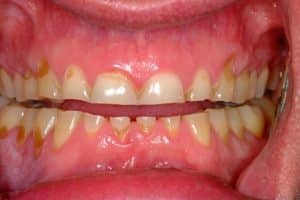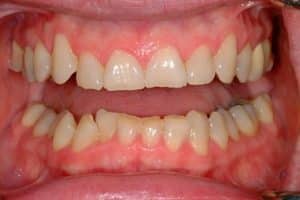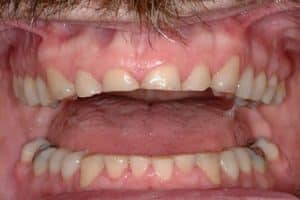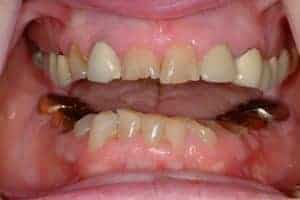
During the course of the day, our teeth can take a beating. From biting and grinding while we eat to chewing on pens and pencils, to using our teeth as tools, we put our mouths through a lot. Based on how our teeth are used every day, some wear and tear are normal over time. But when is tooth wear a cause for concern?


“Tooth wear is a condition we’re seeing a lot more of,” says Dr. David Brusky. “Not only are we using our teeth for things we shouldn’t, but we have much more acid in our diets, which can lead to the softening and eventual erosion of enamel. This then leaves our teeth more susceptible to wear.”


The first step for the dentist is to make the patient aware that there may be some tooth wear. And this is wearing digital photos that can make a tremendous difference in helping the patient understand the issue.
“The digital images we take during our exams can make great teaching tools when we are talking to patients,” says Dr. Brusky. “I can tell you about an issue I see in your mouth, but without a point of reference, it may not mean much. With digital photos, I can bring up different images and show you exactly what I see. To point out abnormal or excessive tooth wear, I can draw your attention to the area I’m concerned with, and even compare your images to an image of a patient with no tooth wear.”
Once the patient is made aware of the degree of wear, he can then discuss consequences that can occur if the wear continues. It’s important to understand the anatomy of the tooth to better understand what can happen if your tooth wear is left untreated.
The outer layer of the tooth consists of enamel, which is the hardest substance found in the body. When your teeth wear, the enamel is being removed, resulting in the underlying dentin being exposed. And this dentin isn’t nearly as strong as the enamel – in fact, it can wear at a rate seven to nine times faster than enamel.
“The biggest risk for patients is that once the enamel has begun to erode or recede, revealing the dentin underneath, the wear will progress at a much faster rate,” says Dr. Brusky. “We typically see wear affecting the anterior teeth in the beginning. But as they wear down and become shorter, the entire bite becomes affected, and the wear begins to travel to the surrounding teeth, too.”
As the wear progresses, it becomes more expensive to treat because there are more teeth involved, and often, treatment is much more involved. It can lead to the need for endodontic (root canal) therapy, and treatment such as crown lengthening to restore the teeth properly.
“Some degree of tooth wear is natural as we age,” says Dr. Brusky. “At each of your dental check-ups, your dentist should be doing a bite analysis to ensure your tooth wear is natural. As you age, your teeth will begin to show some wear, but they will also move, ever so slightly, to compensate for this and maintain their ideal biting relationships. But when the wear becomes more than what this natural process can compensate for, that’s when we want to start talking about how we can help before it progresses too far.”
When correcting the bite, he will replace the tooth structure lost to wear, paying close attention to form, function and appearance. Treating your teeth can protect them from future wear and damage, and treating them early allows him to treat the issue more conservatively, which often means with less expense for you.
“A big portion of my job is education,” says Dr. Brusky. “I want my patients to fully understand what is happening in their mouths, and what can happen if we don’t treat issues when they arise. It’s important that we work together to understand the health of your mouth and decide on the best course of action together. We’re a team, and when you come to my office, you will know that my staff and I will always keep an open line of communication with you, clearly discussing everything we find with you before we discuss any treatment options. If you are fully aware of the health of your mouth, you can make more informed decisions about your treatment.”
If you are concerned about it, schedule a consultation with Dr. Brusky and his team today, before the condition progresses too far.






